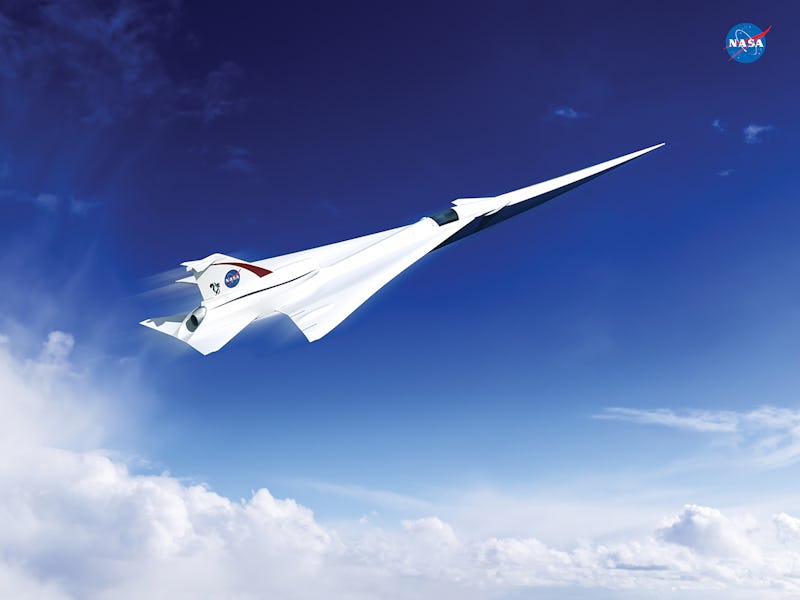NASA's Newest X-Plane Will Be a Quieter Supersonic Jet
Lockheed Martin wins a $20 million contract to help bring back Concorde's successor.

With its newest X-Plane concept, NASA thinks it might have the found a solution to the ear-splitting noise caused by supersonic jets like the Concorde. The agency announced today it has awarded a contract to Lockheed Martin for the preliminary design of a “low boom” aircraft.
The announcement is part of the resurrection of the X-plane program under the New Aviation Horizons initiative. NASA announced the contract at Monday’s X-plane design event at Ronald Reagan Washington National Airport.
Among many problems, one of the main hurdles for supersonic commercial travel has always been noise. When a plane breaks the sound barrier, the sonic boom is loud, for both anyone on the ground below and for passengers inside the planet itself.
“NASA is working hard to make flight greener, safer, and quieter — all while developing aircraft that travel faster, and building an aviation system that operates more efficiently,” NASA administrator Charles Bolden said today. “To that end, it’s worth noting that it’s been almost 70 years since Chuck Yeager broke the sound barrier in the Bell X-1 as part of our predecessor agency’s high speed research.”
“Now we’re continuing that supersonic X-plane legacy with this preliminary design award for a quieter supersonic jet with an aim toward passenger flight.”
The fact that the lucky company is Lockheed Martin is no surprise. Nor is it unusual to see NASA’s interest in bringing supersonic commercial flight back from the dead. The Obama administration is using the New Aviation Horizons initiative as a platform to push for new aircraft that are environmentally-friendly, more fuel-efficient, and quieter.
For NASA, this means supersonic technology — thus birthing the Commercial Supersonic Technology Project. Several industry teams submitted designs for test aircraft to fly at supersonic speeds without creating a loud boom. Instead, the goal is to break the sound barrier with a “soft thump.”
Lockheed Martin won out, and will receive roughly $20 million over 17 months to work on its design and build a prototype jet which can also undergo analytical and wind tunnel validation.
This is a big announcement, sure, but NASA is only the latest player that wants to bring back supersonic passenger planes. The Japan Aerospace Exploration Agency (JAXA) is working on quieter shockwaves, and so are a few private designers and companies.
May the best aerospace manufacturer win.